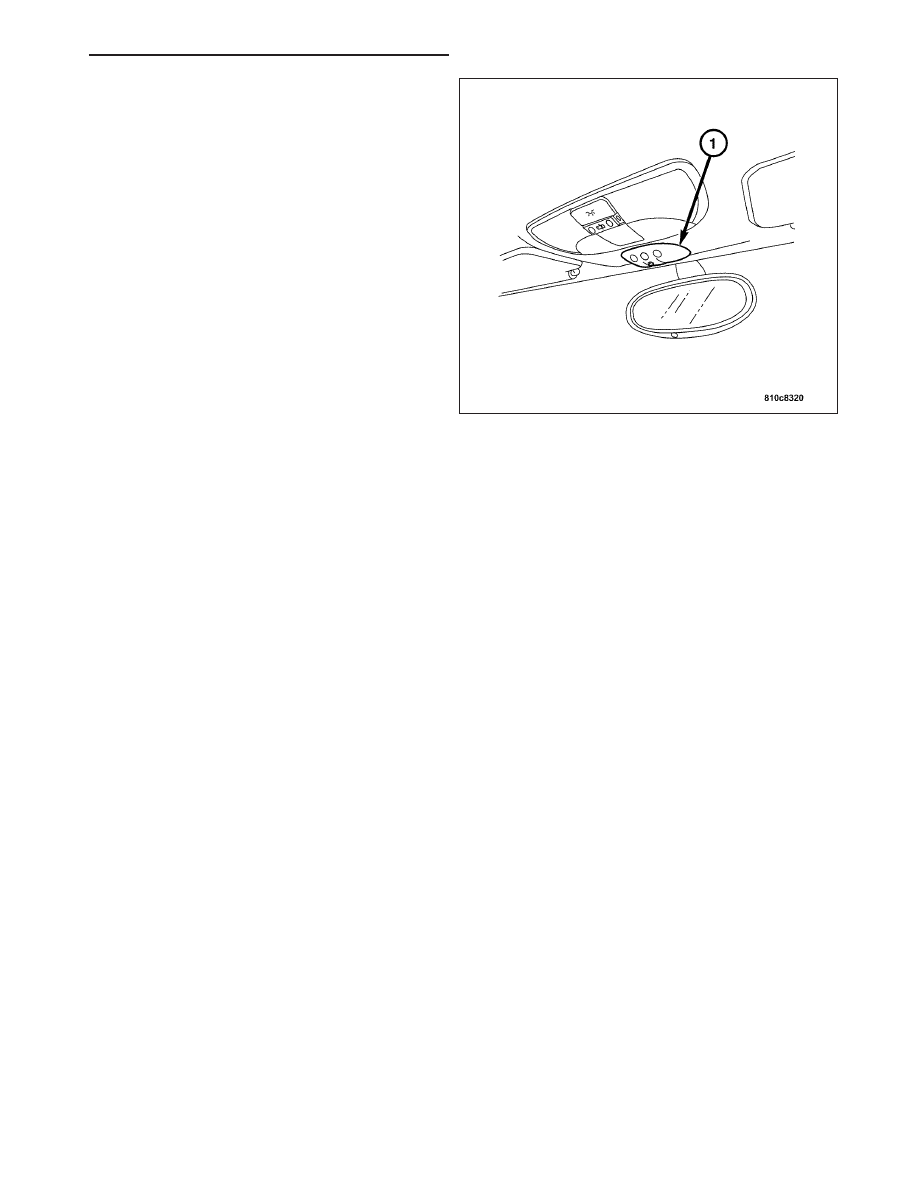Chrysler Crossfire. Manual - part 829

The TPM module (1) performs diagnostic routines,
stores Diagnostic Trouble Codes (DTCs) and provides
the appropriate lamp status to the Body Control Mod-
ule (BCM). When the module determines there is a
fault, the low tire pressure indicator lamp circuit is
grounded and the BCM turns on the “Low Tire” pres-
sure indicator lamp.
The TPM module (1) also stores its own identification
number, each of the four sensor/transmitter identifica-
tion
numbers,
module
version
and
the
date
of
manufacture.
STANDARD PROCEDURE - TPM MODULE PROGRAMMING
If a TPM module fails, or one or more tire pressure sensor/transmitters fail, the TPM module’s diagnostic memory
must be cleared and reprogrammed after replacement. This is necessary for the module to detect which wheel is
sending the signal.
Refer to the following procedure to program the module for identification of tire pressure sensor/transmitters.
Note: The vehicle’s tires must not have been rotated above 8 km/h (5 MPH) in the last two minutes prior to
programming.
1. Connect a DRB III
T
scan tool to the vehicle’s diagnostic connector beneath the instrument panel near the steer-
ing column.
2. Access the Chassis System using the DRB III
T
.
3. Once in the Chassis System; select Tire Pressure Monitor, then select Miscellaneous Functions.
4. Select Train All Mode from the System Test screen displaying the following options:
•
Tire Set
•
Train All Mode
•
Stop Train Mode
5. Place the magnet, Special Tool 8821, at the valve stem for that wheel as directed by the DRB III
T
.
6. When each wheel’s pressure sensor/transmitter has been programmed, the DRB III
T
will automatically direct you
to the next wheel sensor/transmitter to be programmed.
Note: When programming the module (all four sensor/transmitters), the magnet should be moved from
wheel to wheel in a clockwise direction starting at the left front wheel.
7. Remove the magnet and move to each of the remaining wheels as directed by the DRB III
T
. Each sensor/trans-
mitter will automatically sense the presence of the magnet and begin programming.
8. Once “Training Completed” is displayed, exit the program function screen.
9. Verify that the module programming is complete by looking at the tire pressure sensor/tire pressure readings in
the Sensor Display using the DRB III
T
.
10. Once programming is complete, select Stop Train Mode from the System Test screen.
ZH
TIRES/WHEELS - SERVICE INFORMATION
22 - 49